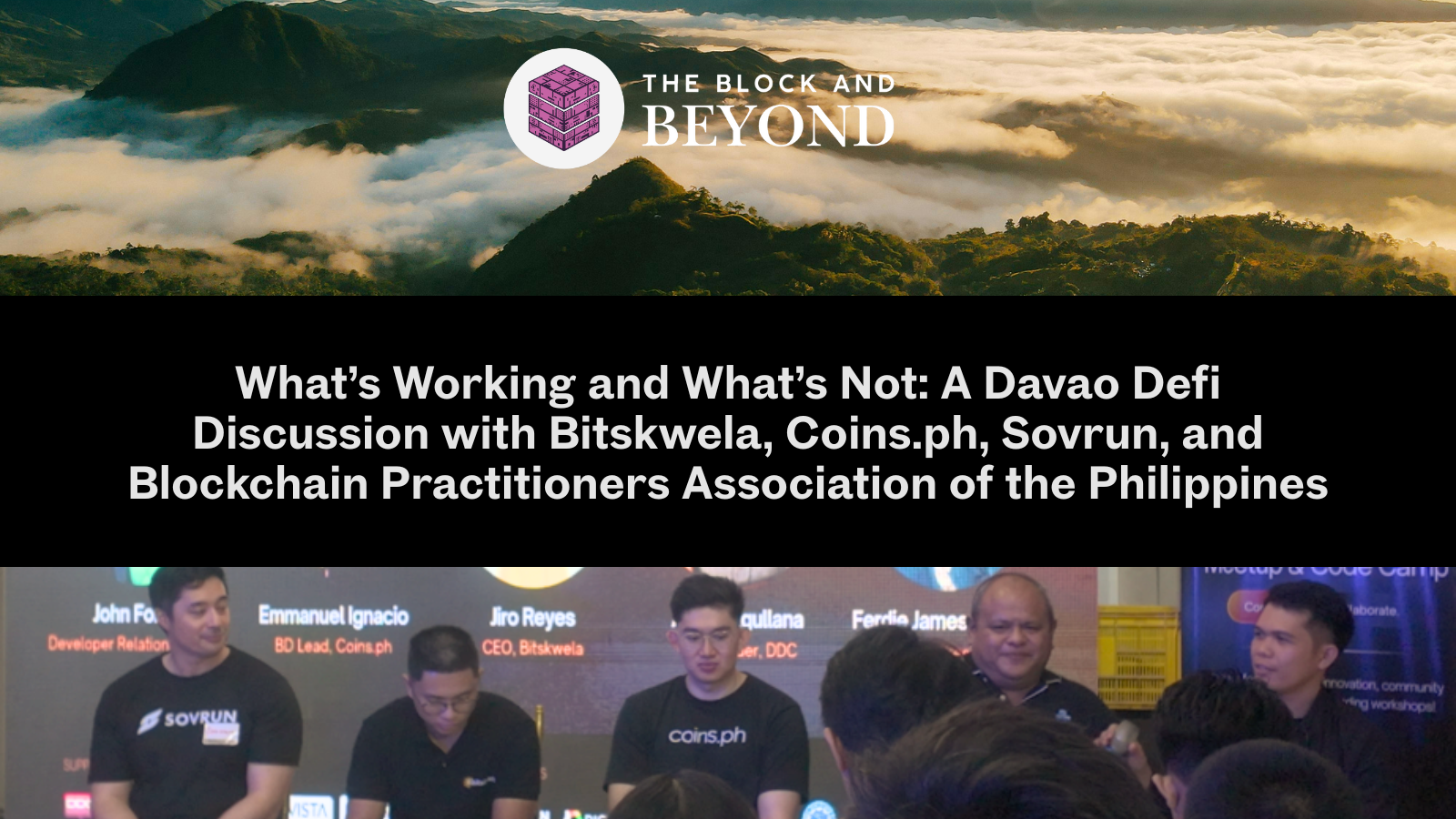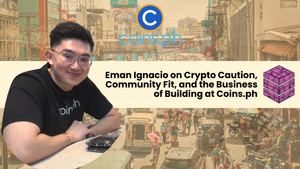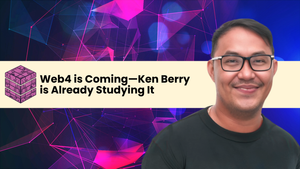From paid internships to blockchain forensics, the road to Web3 looks different for everyone, but the destination must be the same: real builders, not just traders. That was the clear message at a recent panel in Davao City.
Davao City hosted a rare moment of clarity for the Philippine Web3 space, where the optimism of adoption met the realities of builder shortages, user misconceptions, and the fight to make crypto more than a get-rich-quick scheme.
Held during the Sonic Blockchain Meetup, the panel gathered leaders from Bitskwela, Coins.ph, Sovrun, and the Blockchain Practitioners Association of the Philippines (BPAP) to unpack a critical question: What’s actually working in Web3 adoption, and what’s clearly not?
The answers were brutally honest.
From Internships to Industry: How Builders First Enter Web3
Each panelist opened up about how they got into Web3, and the answers ranged from ideological to accidental. Some were driven by principles, like Sovrun’s John Forfar, who left fiat behind in favor of digital sovereignty.
Others, like Coins.ph representative Eman Ignacio, candidly shared that a paid internship was the gateway, proving that compensation remains one of the strongest adoption tools.
Then there were those like Ferdie James Nervida, who mined Bitcoin in 2016 and now tracks on-chain crime, investigating high-profile cases like the Lazarus Group’s laundering trails.
These diverse paths showed one thing: Web3 entry points vary, but staying requires belief, skill, and purpose.
We Have Users, Not Builders
Despite the Philippines’ place as a top global crypto adopter, the panelists agreed: we’re using Web3, not building it. Bitskwela's Jiro Reyes shared the stark comparison of web2 versus web3 developers.
“We have 200,000 Web2 developers in the Philippines, but only about 200 blockchain developers. That’s 1%.”
The contrast is stark. While students once learned how to use Metamask and Binance during the Axie boom, few went on to become actual developers.
Representatives, along with Bitskwela’s, noted that Vietnam and India didn’t start with more developers, they simply activated them better. The barrier isn’t interest, it’s access, mentorship, and education.
Building Culture, Not Just Projects
Jiro Reyes echoed the need to move from events to ecosystems.
“We used to focus on turnout... Now we’re focusing on output. Can we help students actually build something?”
This year, Bitskwela is launching developer courses in JavaScript, Rust, Solidity, and more, available in English, Tagalog, Cebuano, and Ilocano. Their goal? Equip Filipinos with real dev skills to build on-chain, not just trade on-chain.
Meanwhile, Sovrun’s John Forfar emphasized how AI tools like ChatGPT are helping make coding more accessible than ever. What’s missing now is the mindset and persistence to stick with it.
From Users to Builders: Arthur Agullana’s Mission for Davao DeFi
For Arthur Agullana, co-founder of the Davao DeFi Community, the challenge isn’t crypto adoption, it’s the reason behind it.
“We were already adapted to Web3 back in 2020... High school students knew how to use wallets, bridges, and exchanges. But it was all for the wrong reason: easy money.”
Now, through the Davao DeFi Community, Arthur is shifting the narrative, from earning through tokens to earning through building.
“We’re done chasing hype. This time, we’re building developers... Because when the builders show up, the industry follows.”
For Arthur, the solution is long-term: developer education, local pilot projects, and a stronger builder culture in Mindanao.
No More Excuses: Sovrun’s Johnny on the New Builder Mindset
For Johnny, Developer Relations Lead at Sovrun, the shift from being a Web3 user to a Web3 builder isn’t just possible, it’s more accessible than ever.
“It used to be hard. You’d hit a bug, get stuck, and wait for someone to help you,” he said. “Now with AI and open-source code, you can learn and fix things instantly. The only thing left is your willingness to commit.”
Johnny emphasized that platforms like GitHub and the rise of LLMs (large language models) have lowered the barrier to entry. For Filipino developers with internet access, the path is clear: join hackathons, contribute to open-source projects, and build a portfolio.
Coins.ph: Listening, Localizing, and Staying Cautious
On the user front, Coins.ph's Eman Ignacio shared that their strategy for 2025 is focused less on hype and more on user insight. Through constant conversations with their VIP users, they’ve learned that Filipinos aren’t interested in risky margin trades or loans.
“They want reliability,” the panelist explained. “So we’re building the platform with our users—not just for them.”
The company’s cautious approach, shaped by close collaboration with the BSP, contrasts with earlier eras of crypto startups pushing aggressive financial tools. For Coins.ph, localizing offerings to what Filipinos actually need is key to long-term adoption.
What’s Not Working: Crypto as Easy Money
Nearly all speakers agreed: crypto's reputation as easy money has held the industry back. Ferdie James Nervida shared the importance of good actions, warning that crime is still crime in crypto.
“If you only see crypto as a way to get rich overnight, you might get rich, but you might also end up in jail... Instead, learn the tech. Build on it. That’s where the real opportunity is.”
From rug pulls to influencer scams, the message was clear: there’s a need for ethics and literacy to rise alongside innovation.
The Way Forward: Web2-to-Web3 Integration and Local Projects
In closing, the panel issued a challenge to the local community: Let’s stop being passive consumers of Web3. Let’s become builders of it.
From creating pilot projects that blend Web2 systems with Web3 rails, to activating students and training the next generation of blockchain devs, the opportunities are massive, but so are the stakes.











